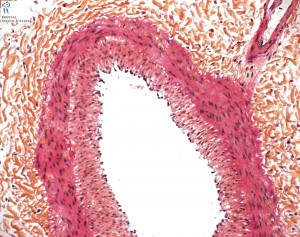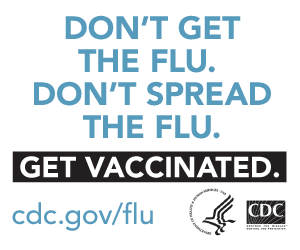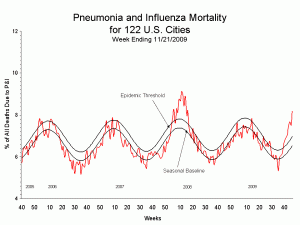Medical evidence continues to accumulate on lung damage in severe cases of H1N1 influenza.
Researchers at Sao Paul University Medical School found three distinct patterns of lung damage revealed from autopsies conducted on 21 patients who died from H1N1. Their findings, published in the American Journal of Respiratory and Critical Care Medicine, indicated that acute lung injury and acute respiratory distress syndrome were prevailing patterns. In some cases, acute lung injury was associated with necrotizing bronchiolitis (premature death of lung cell tissue), in other cases, a hemorrhagic (excessive bleeding) pattern was found.
“Some patients showed traces of a ‘cytokine storm’, where their immune systems had over-reacted, causing an inflammatory response that spilled over and damaged lung tissue, which led to fatal respiratory failure.”
Similar findings on an H1N1 connection to a “cytokine storm” (or hypercytokinemia) were published in the journal Critical Care. Canadian and Spanish researchers found high levels of a molecule called interleukin 17 in the blood of severe H1N1 patients. Interlukin 17 is important in the regulation of white blood cells which fight infection and disease. In certain instances, the molecule can go awry leading to inflammation and autoimmune diseases.
Earlier research employing computed tomography (CT) scans also highlighted the connection between lung damage and H1N1. Findings published in the American Journal of Roentgenology revealed the presence of ground glass opacities (associated with lung inflammation) and pulmonary emboli (sudden blockage in lung artery) in the lungs of severe H1N1 cases.
AJRCCM: Lung Pathology in Fatal Novel Human Influenza A (H1N1) Infection
Critical Care: Th1 and Th17 Hypercytokinemia as Early Host Response Signature in Severe Pandemic Influenza
Medical News Today: H1N1 Swine Flu Deaths Reveal New Pattern Of The Disease, Brazilian Study
MedPage: Autopsies Reveal Three Patterns of H1N1 Death
Reuters: H1N1 flu causes unusual damage to lungs: studies
Science Daily: First Immunological Clue to Why Some H1N1 Patients Get Very Ill or Die
UPI: New Pattern in H1N1 Deaths
Wikipedia: Cytokine Storm
Tagged: Care and Treatment, flu, h1n1, influenza, International News, swine flu, US News









